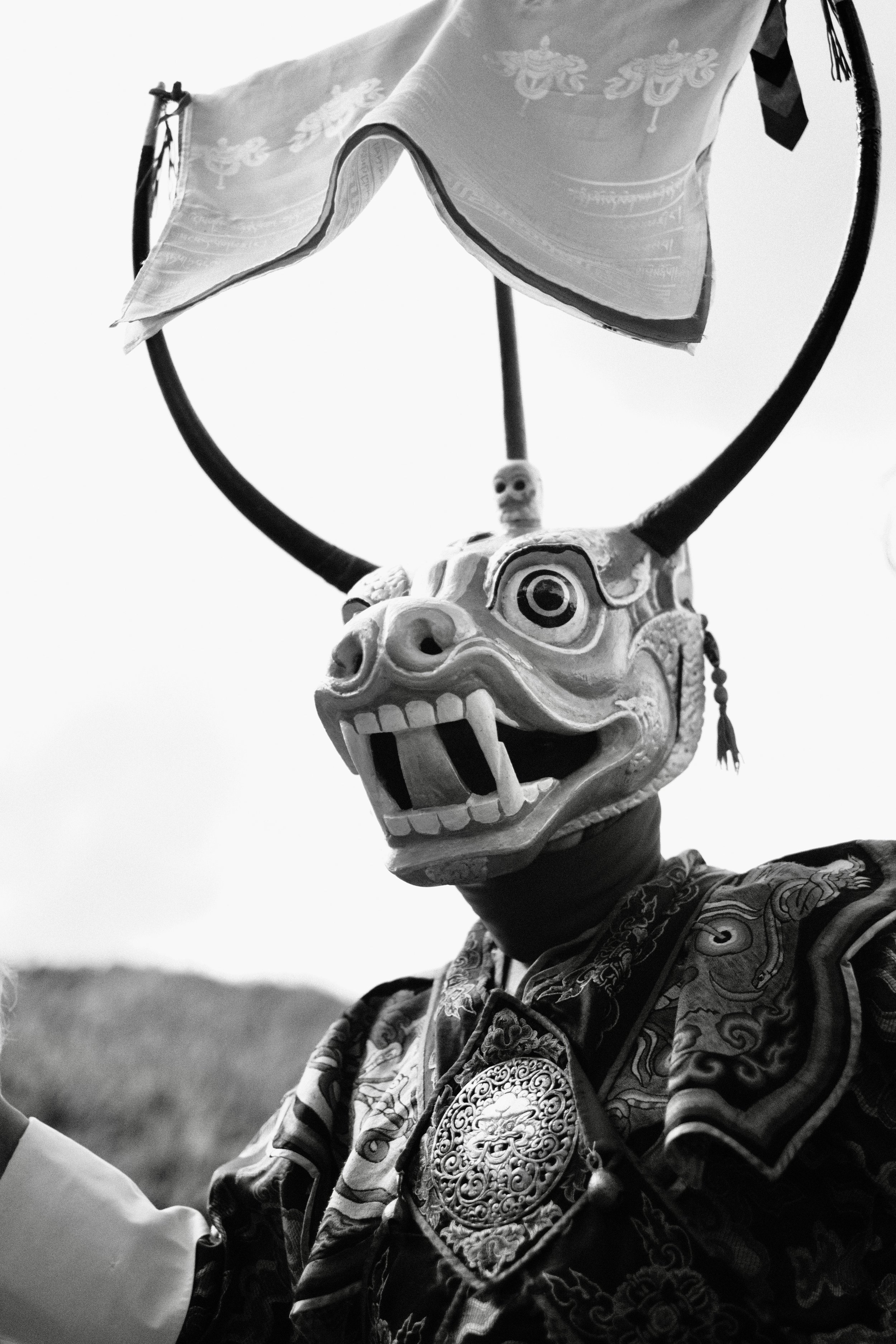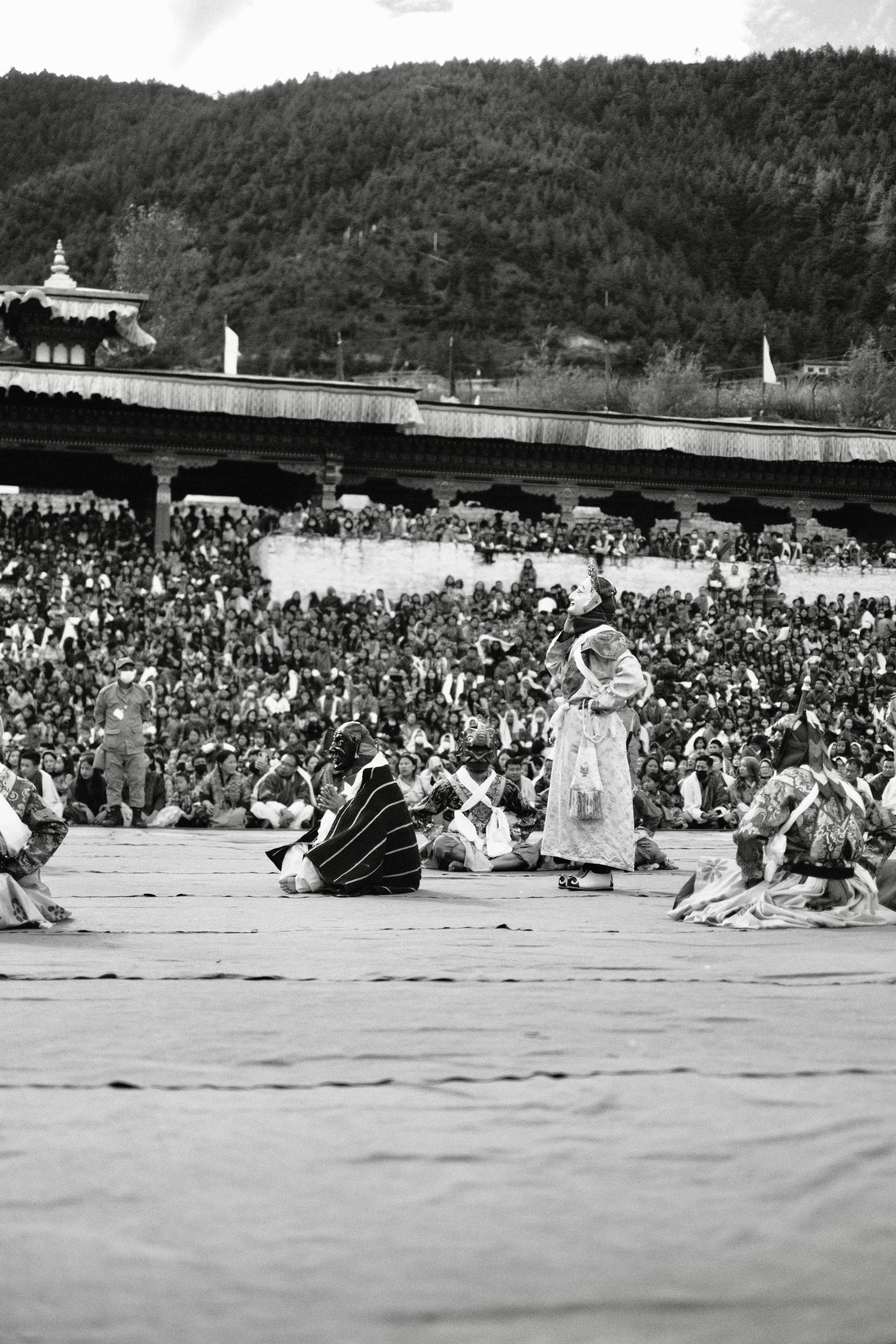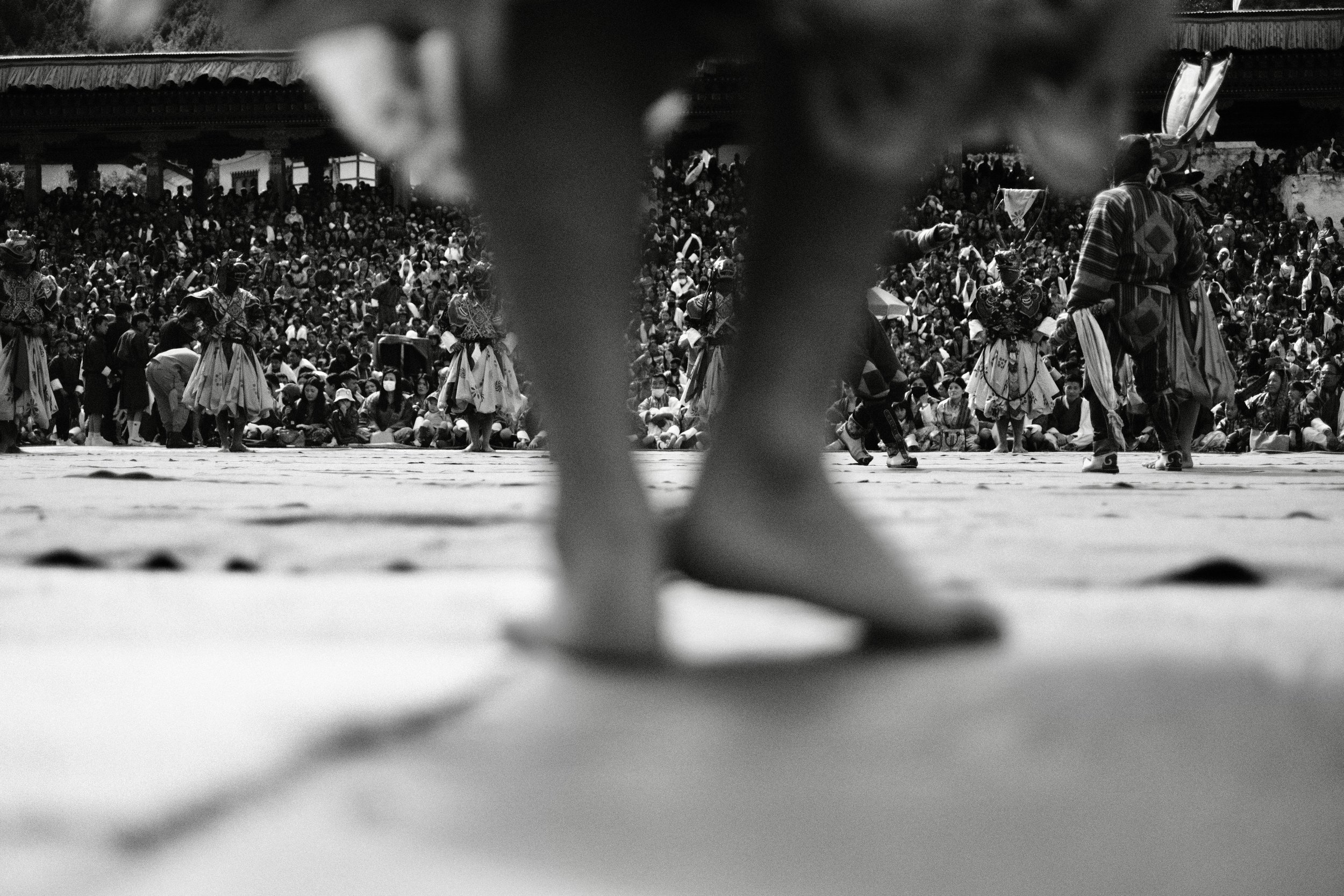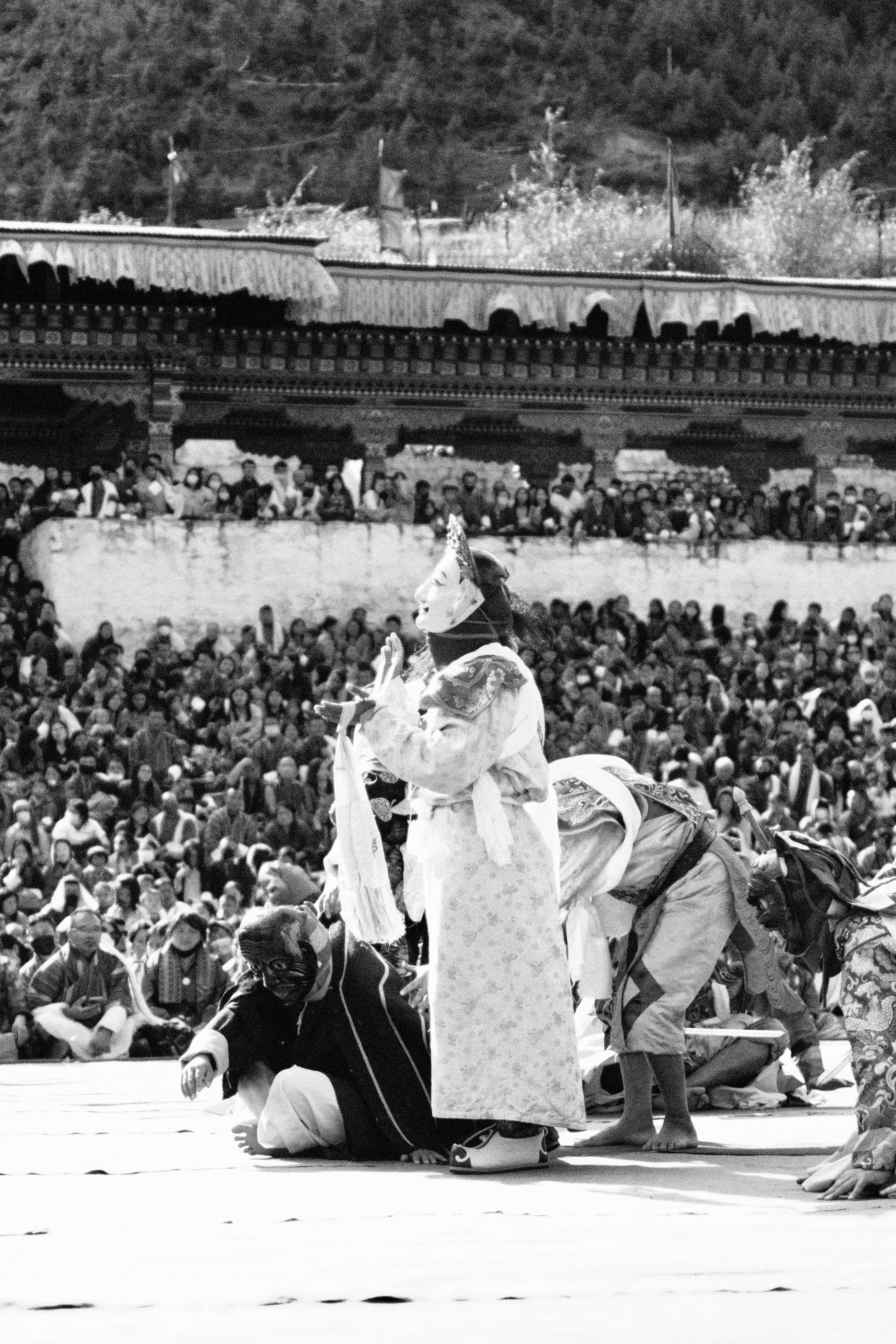Raksha Mangchham
The Dance of the Judgement of Death
Groups of four dancers make their exit in the tradition of the Mangcham performance, a dramatic representation of soul judgment typically staged on the penultimate day of a festival. Inspired by the sacred text "Bardo Thoedrol" or "Book of the Dead" treasure revealed by the 14th-century Saint Terton Karma Lingpa, the drama revolves around the trial of the deceased soul Nyalbam before the Great Lord of Death, Shinjey Choki Gyelpo, who holds authority over his sins. Shinjey, portrayed either by a prominent lama wearing a fierce mask or a large cane puppet, Drey Nakchung wields a magical mirror reflecting the truth of the accused's past actions, rendering lies futile. Advocating for Nyalbam is the Defending Counsel, the white-faced Lha Kharpo, pleading mitigating circumstances of poverty and ignorance for his transgressions. Opposing him is the fearsome Prosecutor Drey Nakchung, listing a litany of crimes, including wildlife slaughter, environmental degradation, defamation, and fraud. The trial unfolds before a jury of six to twenty-six animal-headed spirits, known as Shinjey Lakhen. Mangcham, meaning 'full complement,' denotes a dance involving jury members presenting evidence and participating in the judgment process. The Raksha Mangcham entails a diverse array of jury members, from the Ox and Lion to the Monkey and Abominable Snowman. After Nyalbam's sentencing to further punishment, a subsequent judgment occurs, this time favoring the virtuous Palkyed, who is escorted to a blessed realm on a white carpet by fairies. The furious Drey Nakchung attempts in vain to seize him at the conclusion.

Nyalbam in the process of hunting for food.

The head of the Oxen who was killed for food by Nyalbam

Raksha - The Dance of the Judgement of the Death is lead by Raksha

Raksha performs dance to gather the souls of the deceased.

The Monkey King - (Trel Gochen carries scale to weigh the sins and virtues of the deceased).












The arrival of The Lord of Death

Shinjay Choekyi Gyalpo (Manifestation of the God of Wisdom)

Shinjey Choegi Gyalpo (The Lord of Death)

Dray Nakchung looks for Nyalbam (The Deceased one)

Dray Nakchung runs to capture Nyalbam

Lha Karpo (White God/Defence Counsel) backs up sinner Nyalbam with the virtues he has done.


Dray Nakchung laughs at Lha Karpo and narrates all the wrong doings of Nyalbam to the Lord of Death


The Judgement has been passed as Nyalbam was found guilty and Lha Karpo begs the Lord to save Nyalbam

Dray Nakchung and the Shinjey Laykhen (The Council of Death) takes Nyalbam to Hell.
